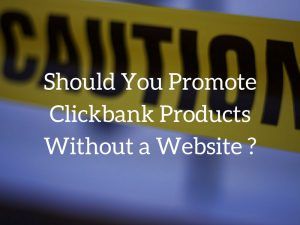 So here’s the scenario – You just got into affiliate marketing and thought of joining Clickbank because of their lucrative commissions. Somewhere along the line, you also found out that there’s a way to promote Clickbank products without a website. Sounds easy, right?
So here’s the scenario – You just got into affiliate marketing and thought of joining Clickbank because of their lucrative commissions. Somewhere along the line, you also found out that there’s a way to promote Clickbank products without a website. Sounds easy, right?
Well, technically, it isn’t wrong, but there is a whole lot of stuff that goes beyond that. Hence, the purpose of this article is to highlight those issues so that you’ll be aware of what’s coming your way.
How Traffic Is Acquired With No Site
When I say traffic, I am talking about real people who are actually searching for something online – not robots or automated click system. Therefore, it’s prudent that you know where these people are AND how those affiliate offers can be delivered effectively to them.
Interestingly, there are numerous resources that will teach you this technique and one of the popular ones can be found on Udemy.
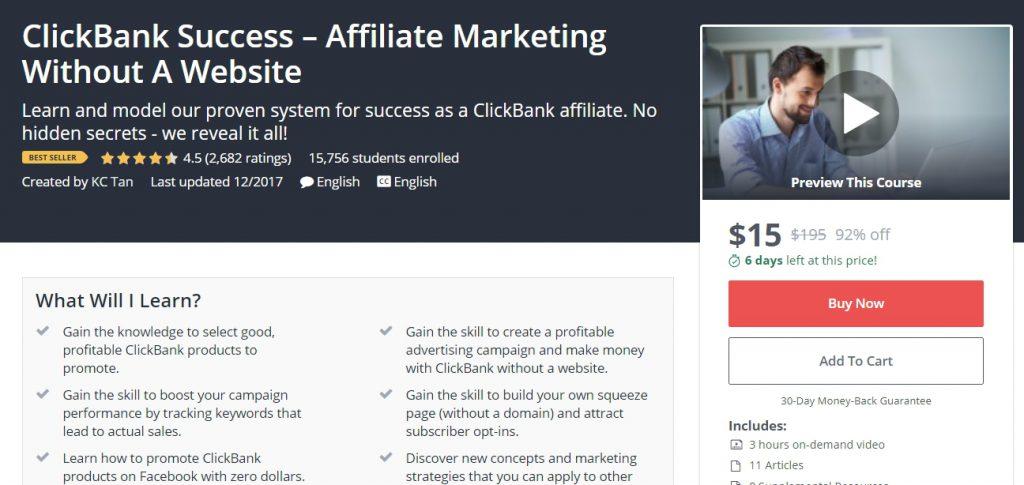
With a 4.5 star rating, more than 15K students enrolled and a 92% discount (at the point of writing this article), it seems like an impressive deal, right? Well, there’s more to it if you read further.

Aha! You need additional funds – not to pay the instructor – but most likely to run the affiliate offers and/or invest in tools that can escalate the process. The key point here is paid traffic. Without a website, you almost always have to pay for a source to highlight an offer and bring in targeted audience AND this will involve a bit of money, if not a lot.
However, you are still a newbie and probably have minimal budget to begin with. Surely there are other ways to acquire traffic for free without a website, right? The good news is, there are. So to be fair, I’ll go through three of the common ones before I go on to explain about paid traffic, okay? Here goes.
1) Article Marketing
Many moons ago, there was a technique called article marketing where you write about your niche/product, publish them in article directory sites in hopes to get viewers to click on your affiliate links.
Ezine Articles is one of them and they used to be a popular resource for disseminating commercial related information. But over the years, people abused it by publishing spun articles and crappy content for the sole purpose of pushing their affiliate links.
When Google’s Panda update came along in 2011, this site suffered major losses in traffic because the new search filter aims to weed out low quality content (such as promotional ones). Their overall keyword ranking dropped dramatically and you can hardly find them on the first page of Google anymore. And there’s an evidence for that.
The SISTRIX Visibility Index is a reference used to measure and analyze the consequences of Google’s algorithm changes. In the table below, you can see the significant changes (value reduction) for Ezine – as well as other directories – in terms of the Visibility Index (SISTRIX) and keyword rankings (KWs) after the implementation of Panda.

What does this mean to you?
Ezine Articles is no longer a reliable source for free traffic. Nowadays, it is mostly used by writers to share information based articles instead of commercial related ones. The audience segmentation has also changed from buyers to just readers, so you might not have a lot of luck dishing out affiliate offers here. Period.
2) YouTube Marketing
YouTube has 1.5 billion active users per month and that is enough to justify its use for promoting any type of business products. The platform is free for anyone to post their videos so you can expect a lot of affiliate marketers using this technique as well. How it works is that you need to insert keywords into the title and description so that it gets ranked in the video search engine.
When someone watches your video and take an interest in the offer, they will naturally check out your affiliate link.
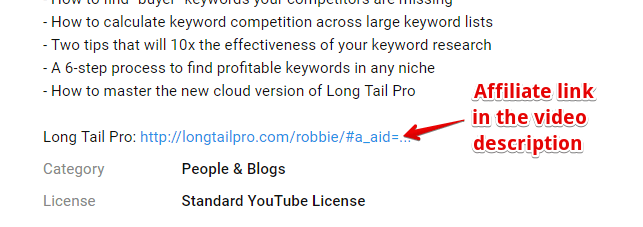
What does this mean to you?
In order to monetize from YouTube, you need to constantly be creative in video production, publish a series or a channel to get viewer engagement going. People who are really into this route will invest in good recording equipment/software, do their research in product reviews/comparison and even create a blog (the equivalent of a website) to ensure that they provide the best content out there. If you are delivering crap, no one is going to watch the videos for sure.
3) Social Media (Facebook)
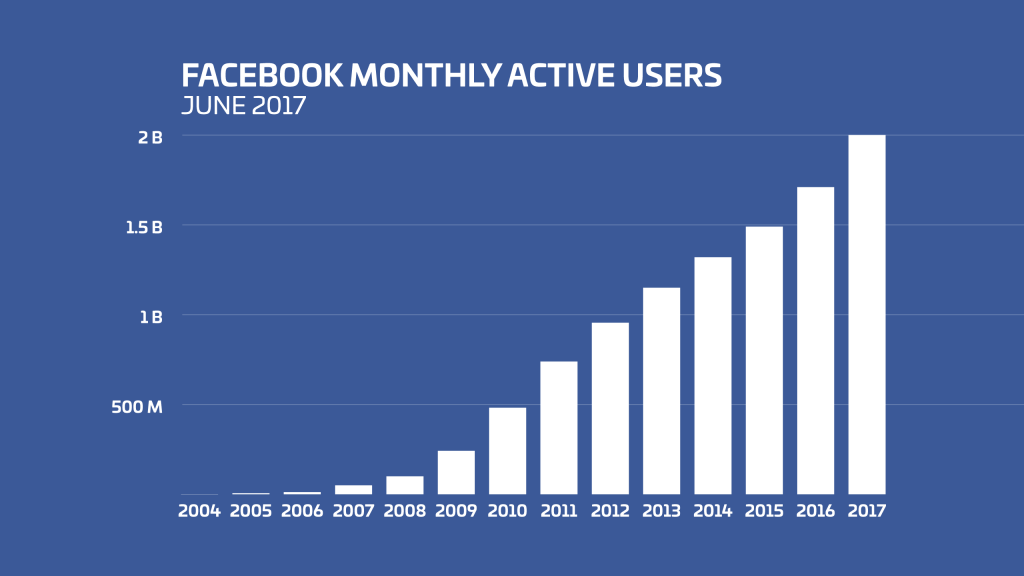
I don’t need to tell you how popular Facebook is, right? With 2 billion users and counting, there are two ways to go about promoting stuff – the free and the paid method. In the free way, you can post offers in your profile, a group or a fan page. The paid method, on the other hand, is where you create a sales page and link it to an advertisement on Facebook to geo-target the right audience.
When it comes to the usage of affiliate links, there are two sides of thoughts. Those who say that it’s okay to use it directly agree that as long as you properly disclose the affiliate relationship, you should be okay. For those who disagree, they think it’s in the best interest of the users that the marketer build a relationship first and then promote outside of the social media platform, like through a blog.
What does this mean to you?
Proceed with caution. Even though many people are posting their affiliate links directly, you should always check with the latest Facebook community policy and advertising guidelines – READ every single detail – to make sure that it’s safe to do it. Otherwise, risk having your account permanently banned.
As a giant social media brand, Facebook has the responsibility to protect their users from spams and if people abuse the platform far too much, I wouldn’t be surprised if they are going to tighten the rules and regulations for affiliate marketers someday. So keep that in mind.
4) Q&A Forums (Quora)
While there are many forums out there, I prefer Quora because it is more organized and the audience is more informed about things. Just like a social media site, anyone can join and post related links (like to their blogs *hint*) on the discussion thread which includes, obviously, affiliate links.
But Quora is quick to intervene by posting this statement – loud and clear – on their official page.
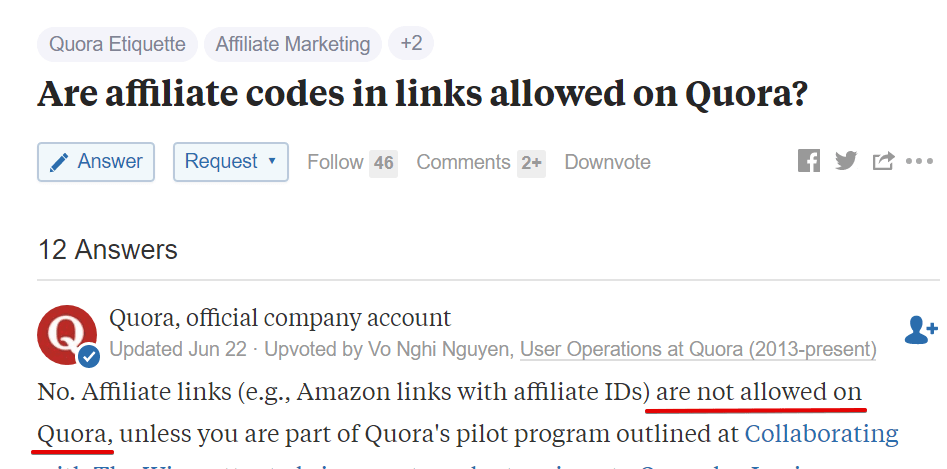
Pretty self-explanatory, right? So, what does this mean to you?
Well, you could go ahead and pray that no one reports you OR you could just move on to other forums within your niche that are more loosely regulated and probably filled with other affiliate links that are all screaming for attention. The choice is yours.
5) Advertising Network (AdHitz)
 If you haven’t done any online advertising before, let me explain in layman term. You have a product to offer, so that makes you an advertiser. The advertisement needs a web space and this is usually provided through other people’s websites (called publishers) for a certain amount of fee, which you are going to pay.
If you haven’t done any online advertising before, let me explain in layman term. You have a product to offer, so that makes you an advertiser. The advertisement needs a web space and this is usually provided through other people’s websites (called publishers) for a certain amount of fee, which you are going to pay.
The medium that acts between advertisers and publishers is called an advertising network and here is where AdHitz comes in. AdHitz has thousands of registered publishers and shows over 50 million advertisements (in the form of text, banners, classified and etc.) across the web space in a single day. The good news – it is cheaper than Google Adsense and allows the direct promotion of affiliate links.
The advertising fee (cost per click) is a flat rate, but depending on which country your ad is shown, the value of the click would differ. Here’s an illustration to show how much an advertiser will be charged based on the location of their ad clicks.

Now for the bad news – the ad placement isn’t contextual, meaning your offer can show up randomly on certain websites that are completely irrelevant to your niche.
For example, a dog training advertisement on a make-money-online site OR a fitness training advertisement on a plumbing site. Logically speaking, those two combinations are ridiculously irrelevant because they have two completely different audiences. Think about it, why would someone reading a plumbing site be interested in a fitness training ad?
The ultimate bad news – some of these clicks derive from people who earn pennies from simply clicking ads after ads. They join paid-to-click (PTC) networks and have absolutely no interest in purchasing anything online.
What does this mean to you?
You are going to waste money on this type of ads that you can do nothing about. The initial cost may look small like $20 per campaign, but the numbers can sum up very quickly if you get too carried away OR worse, clueless about what you are doing.
The Importance of Having a Website
Clearly, if you have a website, all these unnecessary marketing risks can be avoided and you can actually engage with the audience without scaring them away. The enormous benefits are hard to ignore if you consider these facts;
1) A website allows you to build content – primarily blog posts – using target keywords which is a more effective method because it communicates with potential buyers through search intention instead of pushing ads or products that they aren’t interested in the first place.
2) It is well received across different marketing channels (YouTube, Facebook, other people’s blog posts and etc.), meaning you won’t be banned from posting a website link versus an affiliate link. Most importantly, search engines like Google loves it and if you learn to optimize the site correctly, you will be rewarded with a ton of free organic traffic (see chart below).
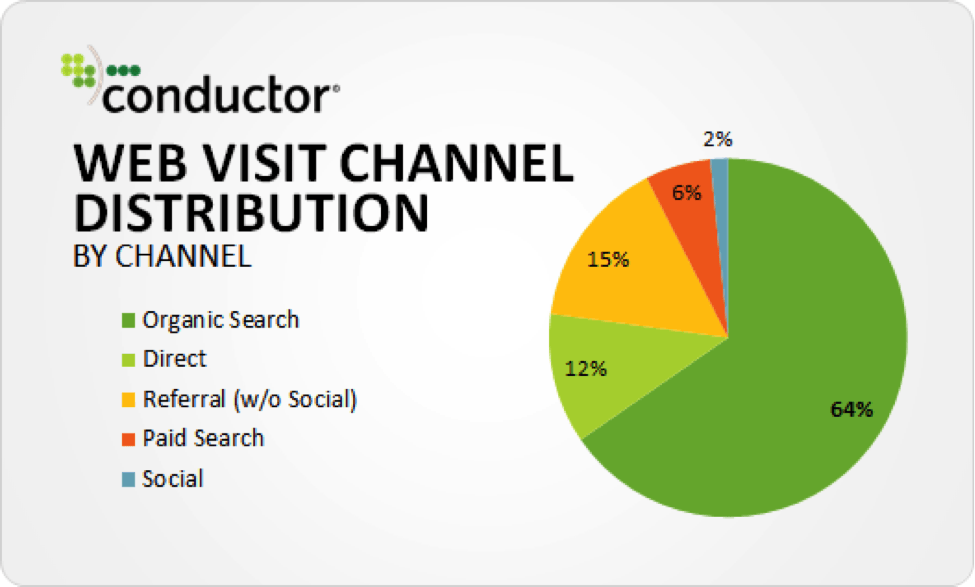
3) With a site, you can create brand awareness, enhance your authority in a certain niche and most importantly, build trust with your audience. That is a huge factor to consider when you are trying to sell people something, especially in the online space.
Take a good look around what’s happening on the internet. Consumer behaviors are changing with technology and nowadays, people are more driven by knowledgeable information over buying impulses. The old affiliate tricks will someday become obsolete if you choose to promote clickbank products without a website.
Affiliate marketing is no different than starting an online business. When you have a strong website foundation, nothing can bring you down. Trust me on that.
If this article has managed to convince you, come over and have a look around Wealthy Affiliate to see how you can benefit from their tools and training. I can also personally walk you through the process so I hope to hear from you soon.
Question – Have you done affiliate marketing without a site? Did it work for you? Please share your thoughts/experience in the comment area below.
You may also be interested to read;
Is Clickbank University Worth Joining For Affiliates
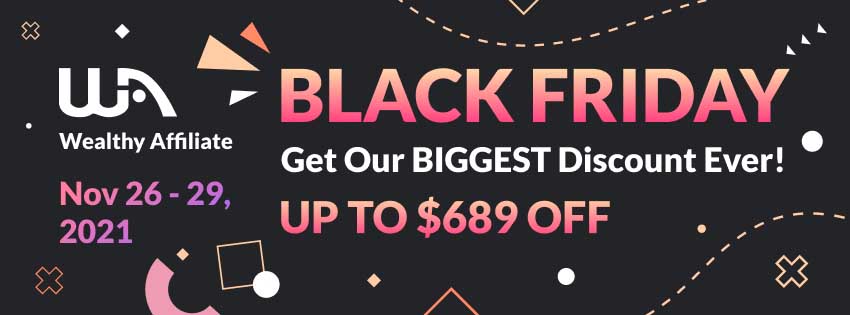
Excellent article. You gave a very good explanation of why you need a website or a blog. Too many people try and tell you that there is an easy way to make money online. They fall for the trap and get discouraged.
I am in the opinion that one should also use more of social media sites for building a brand. It takes time, a lot of engagement and you may even have to pay to play with social media. But you must first have a website in place. It makes more sense to promote it that way.
Thanks for echoing my point, Ken. Social media is great for marketing, but you also need to be selective on which one to use so that you can focus on what type of audience to target.
I can totally resonate with this article. I have tried doing affiliate marketing without a website before and sadly, it did not work for me. Firstly, I had to sacrifice a lot of time. And I mean hours posting on different social platforms. I also spent a lot of money using paid ads and solo ads trying to get people to buy through my link. The outcome were not profitable. So I stopped.
I actually recently started a website to see where it would take me. Hopefully, I am doing something right this time.
Hi Sheree, you are definitely on the right track. Anything that is built upon a well-structured website plus great content, will earn its own free traffic from the search engines eventually. Whatever strategy that you implement thereafter will make more sense because there’s a substance that your readers can finally engage/relate with. If You may learn more about writing content that attracts SEO through my recommended affiliate training here.
Hi there, Cathy. Great info and stats. I have been doing affiliate marketing for 3 years and think it’s time for me to get into producing YouTube videos. It’s pretty impressive that YouTube receives 1.5 Billion views a month.
Can you give me some advice on the equipment I will need and is there any free tools I can use? Thanks.
Hi Jeff, great question. I trust that this video will offer some helpful insights.
Hi Cathy, thanks for this thorough overview. Would you go one step further and say that any of the methods on your list work best in conjunction with a website? So, for example website + YouTube or website + Quora? Your graphic on traffic really stands out for me since I was under the impression that more traffic came from social media sources. I am optimizing for organic traffic and am happy to see that it is the majority source.
Yes, of course Doug. With the exception of article marketing, a website will always work well with most of the techniques mentioned. Especially with social media and forums, readers usually want to know more information, therefore having a website in place is logical to complete their search process.
The graphs and numbers really speak for themselves. I’m surprised to see how Facebook is still growing (even though I was under the impression it was losing popularity). And organic search is the best way to be found? That’s important to keep in mind.
I’m curious though, if you have any research on the other social media such as Reddit, Digg or maybe even Tumblr. And hey, I knew there was something fishy about Clickbank university! Their promotion always seem too good to be true.
Hi Chase, I know this article is a lot to digest so if you need any further explanation, just give me a shout. Meanwhile, I did have an article about the pros and cons of Tumblr in regards to its micro-blogging feature. You may be interested to read that.